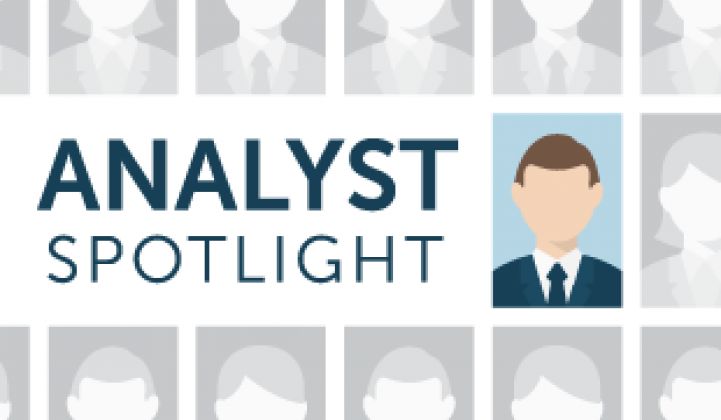Over the next five years, the acronym "DERMS" will likely top many utility shopping lists. Distributed energy resource management systems have recently emerged as attractive software solutions via which to address the economic and technical challenges posed by the proliferation of customer-owned distributed resources. Though it is undoubtedly still a nascent market, the DERMS vendor ecosystem is distinctively diverse, offering solutions that are typically highly customizable on a project-by-project basis, according to an upcoming GTM Research report on the topic.
Utilities in states with high levels of distributed and renewable generation, such as HECO, SDG&E, and Duke Energy Carolinas, have already initiated projects that address the increasingly rapid adoption of lower-voltage distributed energy resources (DERs). In a previous article, we discussed several emerging DERMS solution types (demand response-driven, supply-driven, and mixed asset) and examined deployments across North America. But while the market can be segmented into three general categories, standardization in platform capabilities is far from the norm. Solutions range from single-vendor, end-to-end enterprise systems to distributed, multi-layered platforms that employ several technology vendors and integrators.
FIGURE: DERMS Vendor Taxonomy

Source: Distributed Energy Resource Management Systems 2014
While there are different motivations for employing centralized systems versus distributed solutions, buyers are most likely to consider aspects such as access to flexible capacity, market participation, support of distribution management functionalities, and cost.
Responsible for the majority of global deployments to date, Alstom and Siemens have been leading the DERMS charge, promoting centralized, enterprise-level utility solutions. More recently, however, smaller and more specialized technology vendors have kicked off quite an impressive run.
During the DERMS panel at GTM’s Grid Edge Live conference earlier this year, Tom Bialek discussed SDG&E’s decision to deploy Spirae’s distributed/hierarchical architecture, noting, “We’re not going to be able to build this one big system that sits up front and actually...talks to and controls 160,000 endpoints. […It] takes too long -- especially if you want to do much faster control -- and so you need a distributed, hierarchical structure.”
To make things a bit more confusing, many DERMS capabilities have significant crossover into other software systems, most notably enterprise-level distribution management systems and demand response management systems. The upcoming GTM Research report on DERMS identifies key capabilities offered by many deployments.
FIGURE: Key DERMS Capabilities

Source: Distributed Energy Resource Management Systems 2014
A DERMS solution’s most important function is managing distributed energy resources, a process which is enabled through the bidirectional exchange of information. Take bulk wind generation in the Pacific Northwest or Canadian Maritimes as an example: in order to offset power intermittencies from larger, transmission-scale renewable deployments, more rapidly dispatchable generation and/or load resources are required to provide fast-reacting bursts of energy (typically within a time span of less than four seconds). Distributed solutions, such as those offered by vendors including Enbala, Spirae, and Smarter Grid Solutions, promote field-level control with embedded processing that enables such rapid decision-making.
As more sophisticated DERMS are used to control growing amounts of distributed capacity, functions such as the ability to provide, exchange, and respond to market price/cost signals will become increasingly important. This is where we’ve noticed a higher degree of product differentiation, especially among those vendors offering end-to-end solutions.
Furthermore, GTM Research has found that the distinction between system architectures is highly correlated to the degree of distribution management system functionality support (e.g., volt/VAR control, fault location analytics, etc.). An increase in distributed generation on lower-voltage feeders creates the potential for complications such as reverse power flows and increased voltage levels. While centralized vendor solutions tend to offer greater functionality support for distribution management systems, distributed solutions tend to focus on other capabilities.
As knowledge barriers are eventually overcome and standardization increases, substantial cost reductions are expected to lead to more widespread adoption of these solutions. Rather than using the all-encompassing term “DERMS,” vendors will be forced to group analytical and control capabilities into distinguishable buckets.
***
GTM Research is publishing its first report on DERMS in the coming weeks. To pre-order your copy of Distributed Energy Resource Management Systems 2014: Technologies, Deployments and Opportunities today, email Tate Ishimuro ([email protected]).



